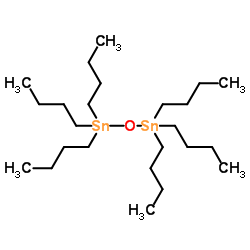Histopathological effects of chronic aqueous exposure to bis(tri-n-butyltin)oxide (TBTO) to environmentally relevant concentrations reveal thymus atrophy in European flounder (Platichthys flesus).
G C M Grinwis, P W Wester, A D Vethaak
Index: Environ. Pollut. 157(10) , 2587-93, (2009)
Full Text: HTML
Abstract
Although the use of tributyltin in antifouling paints has been banned, this compound is still a serious pollutant of the marine environment. This paper describes a unique study in which European flounder (Platichthys flesus) were chronically (8 months) exposed to bis(tri-n-butyltin)oxide (TBTO) in the water under controlled laboratory conditions. Residue levels in selected tissues (liver, muscle) and general health status indices were measured and the effects on several organs (gills, liver, mesonephros, ovary/testis, spleen, and gastrointestinal tract) were examined histopathologically. Additionally, morphometric analysis of the thymus was performed. The major finding is that exposure of flounder to 5 microg TBTO/l over a period of 8 months, resulting in body burdens comparable to high field levels, induced significant reduction of thymus volume, possibly affecting immunocompetence of the animals. Chronic exposure of European flounder to tributyltin is therefore likely to affect the general health status of this species in heavily polluted aquatic environments.
Related Compounds
| Structure | Name/CAS No. | Molecular Formula | Articles |
|---|---|---|---|
 |
Tributyltin oxide
CAS:56-35-9 |
C24H54OSn2 |
|
Rapid screening and identification of multi-class substances...
2015-03-20 [J. Chromatogr. A. 1386 , 22-30, (2015)] |
|
A novel toxicogenomics-based approach to categorize (non-)ge...
2015-12-01 [Arch. Toxicol. 89 , 2413-27, (2015)] |
|
A draft map of rhesus monkey tissue proteome for biomedical ...
2015-01-01 [PLoS ONE 10 , e0126243, (2015)] |
|
Blocking the association of HDAC4 with MAP1S accelerates aut...
2015-10-01 [Aging (Albany. NY.) 7 , 839-53, (2015)] |
|
Phototactic behavior in Daphnia magna Straus as an indicator...
2007-07-01 [Ecotoxicol. Environ. Saf. 67(3) , 417-22, (2007)] |